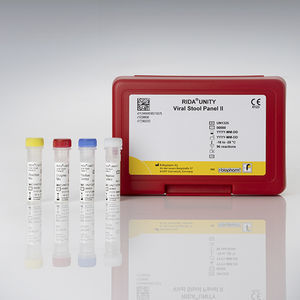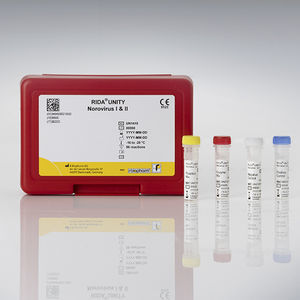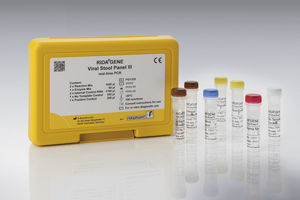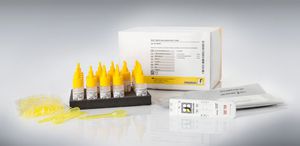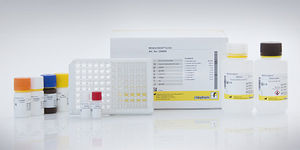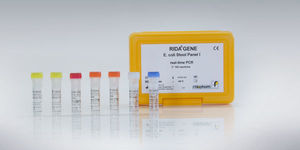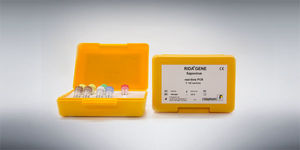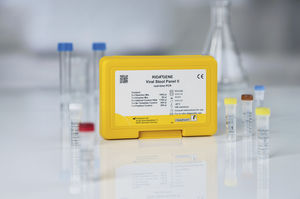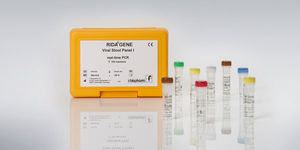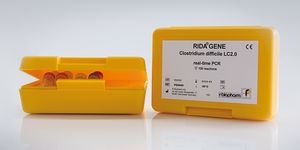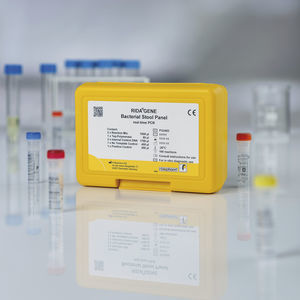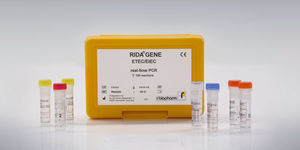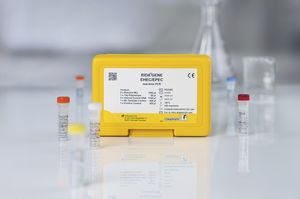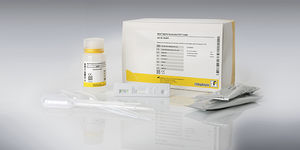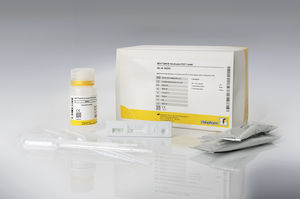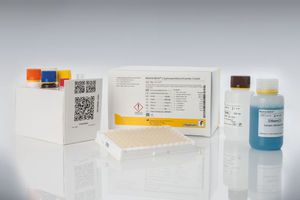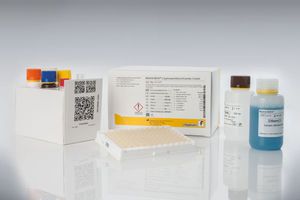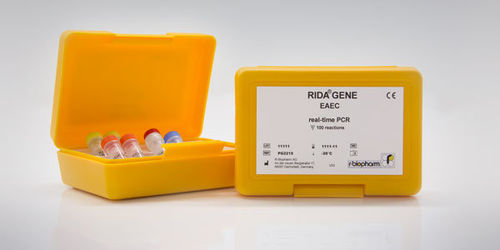
Gastrointestinal infection test kit RIDA®GENEbacteriaEscherichia colienterobacteriaceae
Add to favorites
Compare this product
Characteristics
- Applications
- for gastrointestinal infections
- Micro-organism
- bacteria, Escherichia coli, enterobacteriaceae
- Sample type
- cell, stool, surface
- Analysis mode
- molecular
Description
For in vitro diagnostic use. RIDA®GENE EAEC is a multiplex real-time PCR for the direct, qualitative detection of enteroaggregative E. coli (EAEC) in human stool samples. RIDA®GENE EAEC multiplex real-time PCR is intended for use as an aid in diagnosis of gastroenteritis caused by enteroaggregative E. coli.
General information:
Escherichia coli (E. coli) are gram negative, facultatively anaerobic rod bacteria which move by peritrichal flagellation and belong to the Enterobacteriaceae family. E. coli are part of the normal intestinal flora of humans and many farm animals and are generally nonpathogenic. Some E. coli strains are pathogenic to humans through the acquisition of certain virulence factors (e.g. genes for toxins).
The six known intestinal pathogenic E. coli: enterohämorrhagic E. coli (EHEC), enteropathogenic E. coli (EPEC), enterotoxigenic E. coli (ETEC), enteroinvasive E. coli (EIEC), enteroaggregative E. coli (EAEC) und diffusely adherent E. coli (DAEC) can be differentiated by the virulence factors.
Enteroaggregative E. coli (EAEC) were first identified and described in the stool of a child from Chile in 1987. The defining feature of EAEC is its characteristic aggregative adherence (AA) phenotype. In the gold standard HEp-2 cell adherence assay EAEC adhere to the epithelial cell surface in a “stacked-brick” formation. EAEC are defined as E. coli that do not secrete heat-labile or heat-stable enterotoxins and adhere to HEp-2 cells in an AA pattern. Certain EAEC strains carry a high molecular weight plasmid (pAA) associated with AA, on which a number of virulence genes (e.g. aggR, aggA, aafA, agg3 and aatA) are located.
Catalogs
No catalogs are available for this product.
See all of R-Biopharm AG‘s catalogsRelated Searches
- Assay kit
- Solution reagent kit
- Blood assay kit
- Serum assay kit
- Immunoassay assay kit
- Plasma assay kit
- Infectious disease detection kit
- Diagnostic reagent kit
- Rapid lateral flow test
- Immunoassay rapid diagnostic test
- Molecular test kit
- Respiratory infection test kit
- Clinical assay kit
- Infectious disease rapid diagnostic test
- Cassette assay kit
- Lateral flow test kit
- COVID-19 assay kit
- ELISA assay kit
- Real-time PCR test kit
- Quality control reagent kit
*Prices are pre-tax. They exclude delivery charges and customs duties and do not include additional charges for installation or activation options. Prices are indicative only and may vary by country, with changes to the cost of raw materials and exchange rates.


